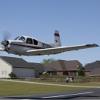Retractable Step Makes a Difference
-
Members Online
- exM20K
- bixmooney
- pkellercfii
- N201MKTurbo
- Jamesp
- Deb
- Bartman
- 7.Mooney.Driver.0
- TCC
- Mreed420
- thomas1142
- jamesyql
- gabez
- Rocket_Driver
- AndreiC
- toomany
- 201er
- chrisburdzy98
- cleatus99
- Hank
- EricJ
- akb3
- Steve Dawson
- IFLYIFR
- ElkoRandy20J
- takair
- navysix
- Rick Junkin
- varlajo
- MikeOH
- 201Steve
- Marc_B
- spaceman39a
- PeytonM
- Matthew P
- Ron McBride
- Yetti
- Evant28
- Parker_Woodruff
- DXB
- Blueskiez


Recommended Posts
Join the conversation
You can post now and register later. If you have an account, sign in now to post with your account.